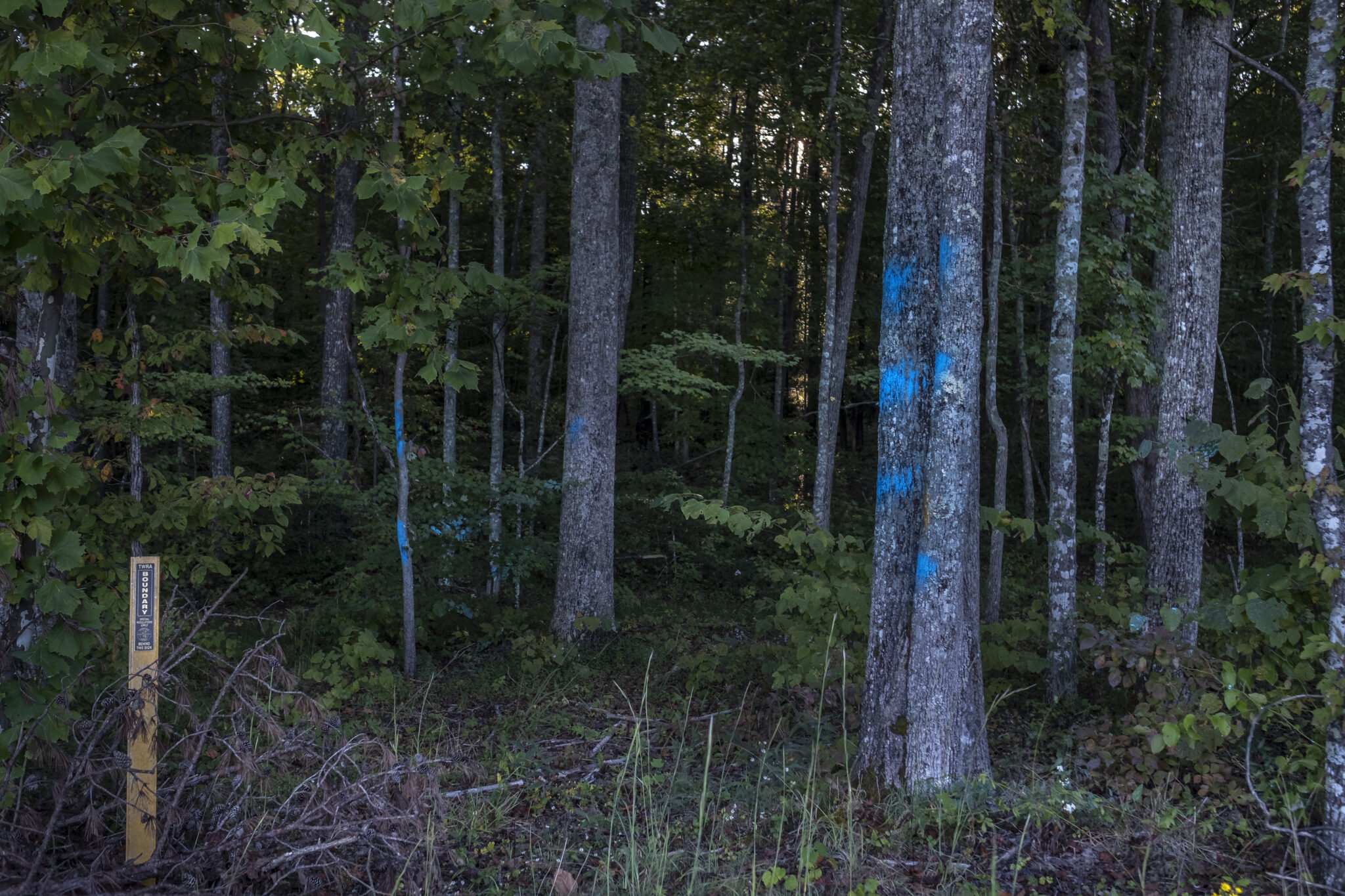“Bridgestone Firestone is one of the gems of White County,” said Elizabeth McDonald, one of two dozen people who spoke against the plan until the meeting grew too late to get through the long line of residents who signed up to address the TWRA.
“It’s a place that is so beautiful, so intact, and it can never be replaced. I appreciate caring about quails, but you have people in this room who, for generations, have called this home. You have to understand you are attacking our homes.”
The meeting was organized by Rep. Paul Sherrell, a Republican who represents the area, after an internal TWRA map leaked to a local resident revealed plans to cut 2,000 acres of hardwood trees on the property bequeathed to the state by the Bridgestone Corporation in 1998.
The map quickly circulated among residents, and so did the outrage. The old-growth timber slated for demolition lines the path heading to Virgin Falls State Natural Area, where the tree canopy also shades hiking trails through a series of scenic waterfalls. The forested area slated for removal forms part of a popular deer and turkey hunting area, too.
Sen. Paul Bailey, R-Sparta, and Sen. Heidi Campbell, D-Nashville — who said she has heard complaints from her Nashville constituents and others across the state who routinely visit the wilderness area — also attended the meeting.
In a series of powerpoint presentations, TWRA officials outlined the urgent need to establish grassland habitats in Tennessee, not only for the Northern Bobwhite, but for native plants and birds for whom savannas — sparsely treed grassland — are critical to survival.
Clearing forest would benefit at least 70 species with the greatest conservation needs, said Wally Akins, TWRA’s wildlife and forestry assistant chief.
“Closed-canopy forests have limited value to many species,” he said.
Hundreds of native plant species remain essentially dormant underneath the forest canopy, waiting to emerge, said Dwayne Estes, executive director of the Southeastern Grasslands Initiative. Savannas are “the forgotten landscape of the South,” he said.
“Savannas are endangered ecosystems on their last legs,” he said. “This is not just about the wildlife. It’s not just about the quail. We, right now, are on the precipice of a collapse under our feet.” The northern bobwhite, whose populations have plummeted by about 80% in recent decades, are the “canary in the coal mine,” Estes said.
The hour-long presentation by state biologists, who sometimes used technical terms and flashed a series of bird, flower and grass slides to illustrate species that would benefit from deforestation, left many in the room unpersuaded and impatient.
“This came off as you trying to tell me my opinion isn’t right and you know the science better,” said Theresa Lawson, a Sparta native who know lives in Nashville. “I grew up on that mountain and my heart is still there.”
Turkey, deer and squirrel hunters also objected to the plans, which could wipe out prime forested areas used by hunters for generations in the region, well before the area was established as state-owned lands.
“There is a time and a place for this,” said Mike O’Neal, a lifelong resident of the area who hunts on the public lands. “This is not the place. I’m not against hunting quail at all. I’m for this beautiful place. You cannot cut hundreds of acres and take that away from people. Do not wipe out this area. Our kids will not see what we have seen.”
